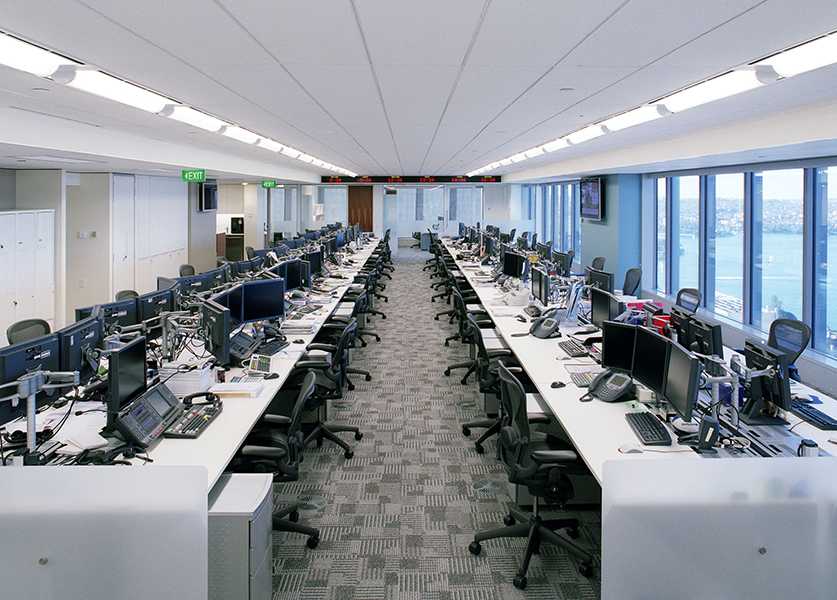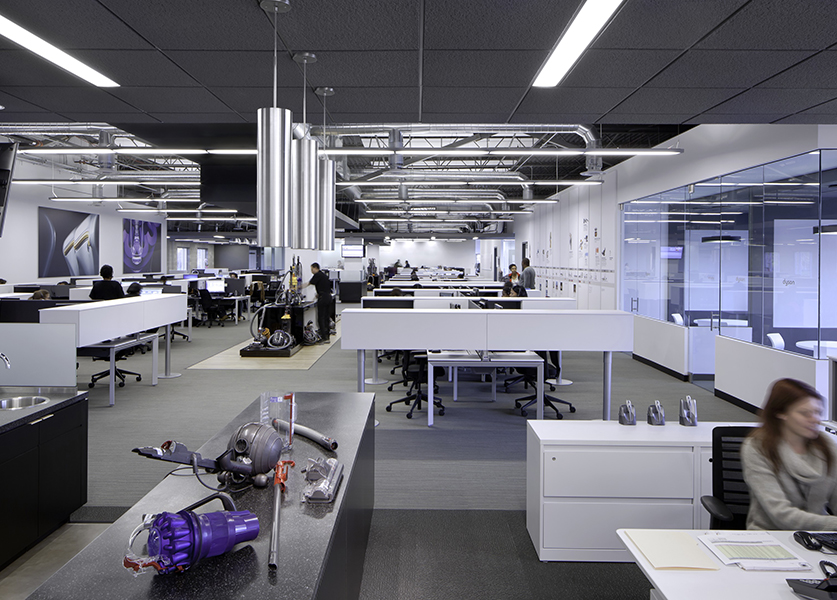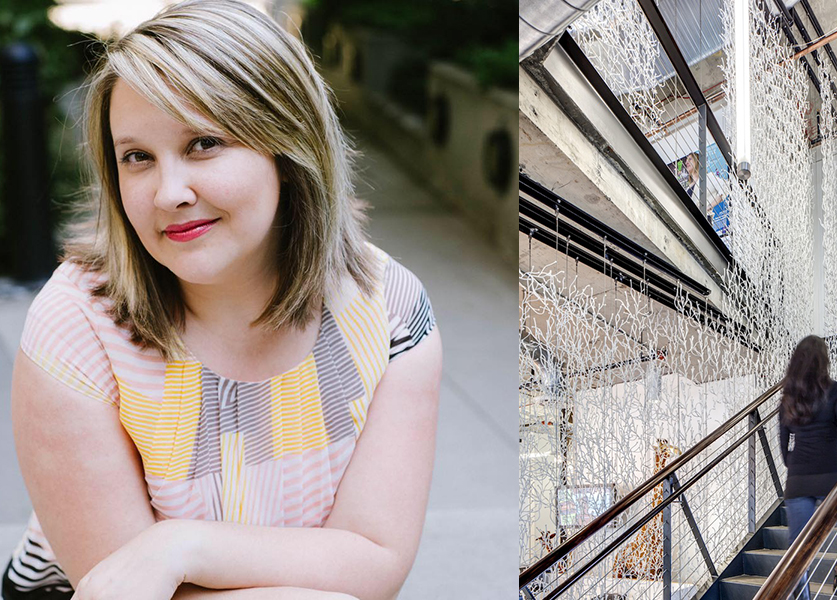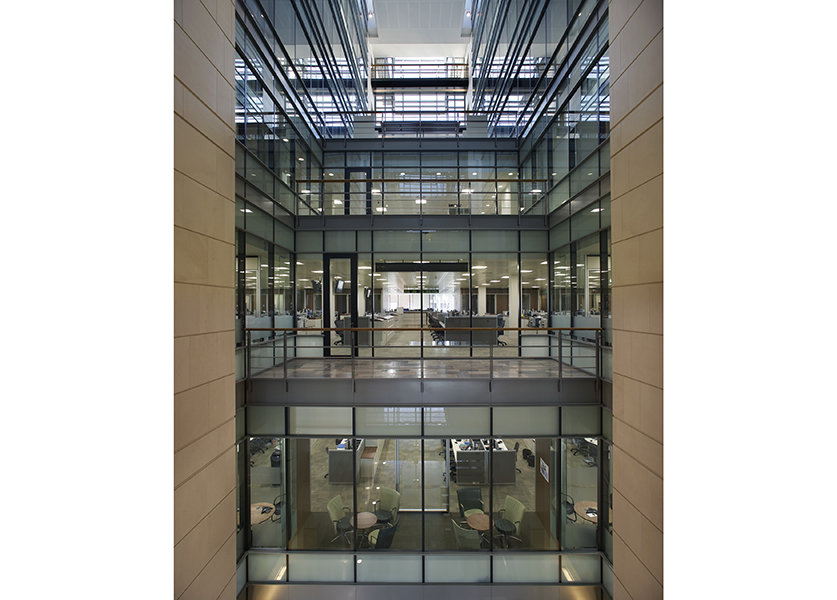Customized facilities—from mega data storage centers to trading floors and call centers—let clients strategize and choose the appropriate level of performance and security they demand.

The workplaces that support online banking systems, electrical power grids, and air traffic controls often involve highly technical considerations and, in certain scenarios, degrees of mission critical support. Broadly speaking, mission critical refers to any aspect of an enterprise whose disruption or failure would cause significant or even catastrophic damage. First used by NASA to describe the life-supporting components in space craft, today the term has a wide application. When applied to architecture, mission critical is much more specific and, as of late, comes with an emphasis on data storage.
There are degrees of criticality; the data center for a huge medical center is typically deemed more “critical” than a call center that handles customer support. But the importance of data storage on a grand scale in today’s highly connected and interactive digital environment takes center stage in both scenarios.

The design and build of mission critical data storage facilities requires a specialized expertise that relies significantly on engineers and implementation by mechanical engineering firms, although an architect may be the guiding force behind the effort, integrating the team of experts from structural engineers to IT specialists. Why such specialized engineering for this typology? Heavy, custom equipment is geared to store huge quantities of data, run servers in a safe environment and provide ease of access, maximum security, faultless backup, and disaster planning. Both physical and virtual tools are required to guard against sophisticated hacking attempts and natural and manmade calamities. Such centers are extremely expensive to put in place, costing $500 – $1500 per square foot depending on the level of performance and security for which you strive.
Options Trending
Increasingly, decision makers have a myriad of choices to achieve a successful data storage strategy. One option is colocation at a third party purpose-built, mission critical certified facility. The advantages of this approach are significant: Engaging a multi-tenant data center solution requires no upfront construction or waiting for build-out to go to market, and can offer a range of choices for networking and connectivity with customized and cost effective solutions. Since a state-of-the-art mission critical facility will be outdated in three to five years, it is the provider’s perogative to offer next generation upgrades and emerging technologies. Shared costs among tenants also allow for lower power usage effectiveness (PUE) rates and management costs.
Another strategy is to build an interconnected network of smaller but highly secure data centers in different geographical locations so that if one center goes down or becomes congested another can seamlessly take over.

Call Centers, Data Storage, and Trading Floors
Customizing the “mission critical” aspect of a facility to meet the challenge and even exceed client requirements for secure in-house data storage, call centers, or trading floors has long been the purview of architecture firms, and IA has completed its share of all three. As a global firm we’ve delivered trading floors in multiple, far-flung locations, including Hong Kong, Shanghai, Kuala Lumpur, Tai Pei, Jakarta, London, Sidney, Melbourne, and Mexico, as well as various locations across the U.S.

Case in point: Most recently one of our confidential clients, a pioneer in internet-based trading, relocated one of its facilities to a 110,000-square-foot space targeted for LEED Gold. Special measures, both physical and electronic, were incorporated throughout to comply with the industry’s stringent security regulations and site requirements. To meet the company’s even more elevated standards, the site had to be iron clad against extreme and unforeseen events, both natural and man-made. Over $3 million was invested in the site and infrastructure, which includes a massive server and 48-hour dual backup generator system.
According to IA Principal John Miesner, “Dependable facility design and systems are critical to our client’s success across all industries. Whether it be a call center for Dyson, a trading floor for Merrill Lynch, delivering optimal performance is fundamental to every IA project.”
IA is a global firm of architects, designers, strategists, and specialists. We focus exclusively on environments through the lens of interior architecture—a radical idea in 1984, when IA was founded. We are highly connected agents of change, committed to creativity, innovation, growth, and community.
IA is a global firm of architects, designers, strategists, and specialists. We focus exclusively on environments through the lens of interior architecture—a radical idea in 1984, when IA was founded. We are highly connected agents of change, committed to creativity, innovation, growth, and community.


